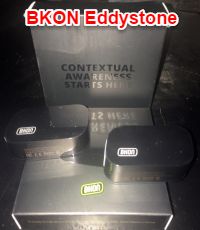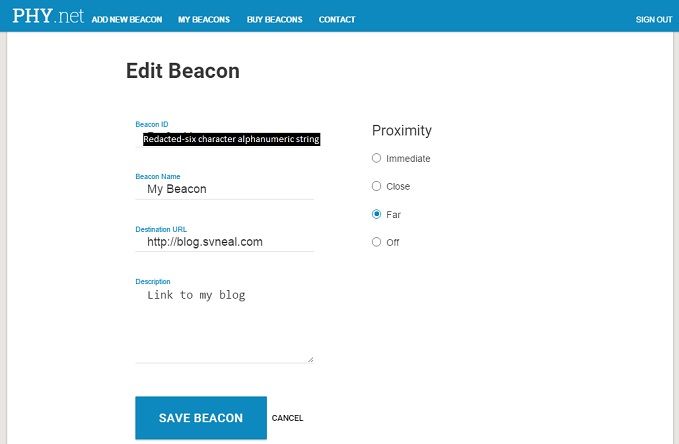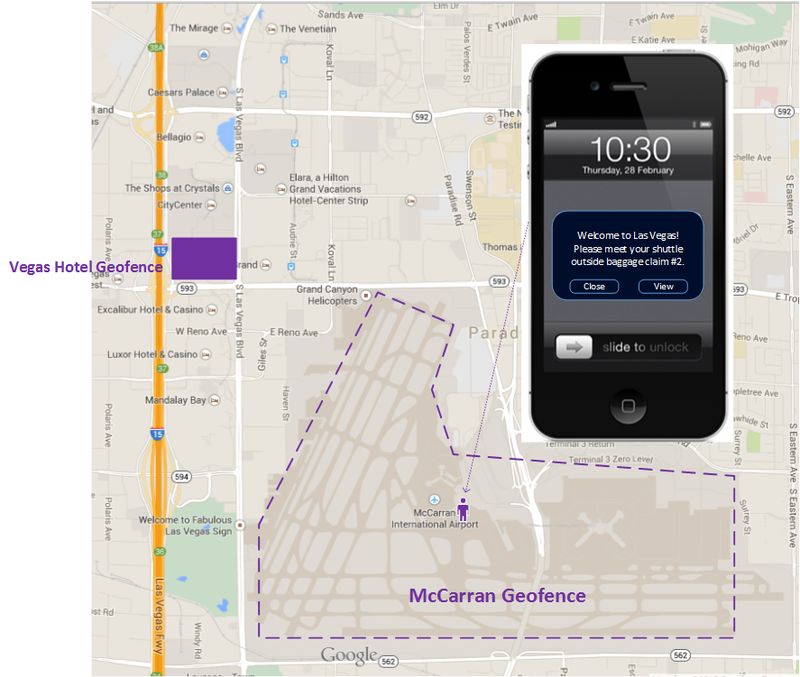I had the opportunity this week to visit Cisco Systems with the the Wireless Field Day 8 crew this past week to discuss the updates to the Cisco location services roadmap. This space has been a passion of mine for a number of years and to see major advances in the last 12-18 months has really gotten me energized again about the possibilities that are out there.

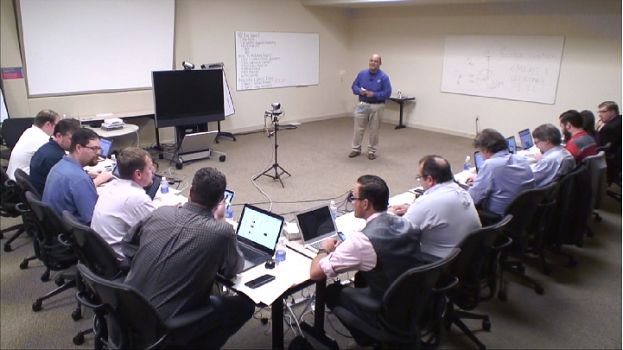
Cisco provided a recap of how we got to where we are today and I wanted to do the same to ensure that the concepts here are captured properly.
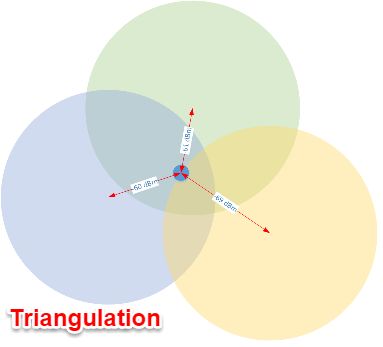
Triangulation
Location services use the triangulation concept to position a device within some probability of accuracy. In the example below, the object being tracked is roughly equidistant from the access points in the upper and left access points and a bit further from the right access point. As you may already know, under most conditions the best accuracy that can be expected is 3-5 meters and there is no certainty that the tracked client will be in a specific room as it could be on the other side of a wall, etc. This has lead to minimal adoption of location services as often this information simply isn't good enough to be useful. It's also important to note as Cisco mentioned in their discussion that for a packet to be seen by all three APs in this scenario, it must be a broadcast packet. On many devices, broadcast packets are becoming more uncommon while associated to an access point. This means that the refresh rate of this location information is slowing down, decreasing its usefulness further.
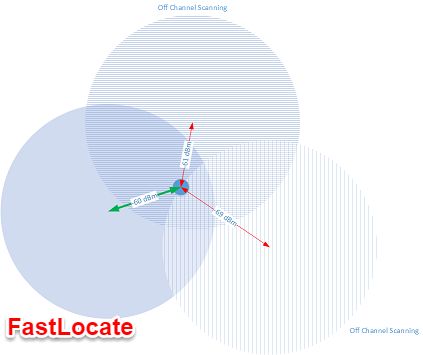
FastLocate
One of Cisco's recent innovations to assist this refresh rate issue is known as FastLocate. This uses data packets to improve the rate at which we see packets. Since data packets only exist between the client and the AP that it is associated (green arrow in the FastLocate diagram), the other APs have to go off-channel briefly to hear these packets as well. This process improves the refresh rate from approximately 1 frame per 60 seconds to 1 frame per 10 seconds. It's important to note that while this does not improve the actual location measurements, it does provide more data points which allows for better overall resolution and causes less "jumping" in which clients appear to teleport from one location to another.
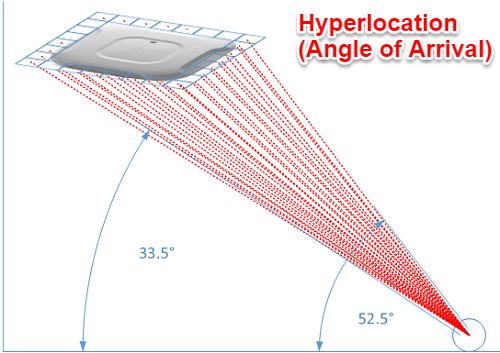
Cisco's Hyperlocation Module (HALO)
The HALO module was the highlight of the Cisco presentation for me as I had not seen one of these up close yet. The HALO module leverages a 32 element (16 2.4GHz and 32 dual-band 2.4/5GHz) phased array antenna that sits on a collar surrounding the access point and attaches via a special connector on the new wireless security module. This array is comprised of directional antennas which enables far greater location accuracy and is truly the first real leap in wireless location accuracy in quite some time. Since each of these antennas are facing different directions and are all slightly located apart from each other, it is possible for the APs to calculate Angle of Arrival (AoA) in the wireless signal. This combined with the traditional triangulation allows for very specific accuracy down to approximately 1 meter, which is competitive with BLE capabilities. Further testing will be required to see if these claims hold up and if we can see actual room level (or better yet bed, etc.) accuracy, but I believe strongly that this will be the case in most situations. Currently this limited to associated clients only, but there is a near term roadmap for products that beacon on regular intervals such as RTLS tags. Tracking unassociated devices is of lesser priority right now, but is on the road map.
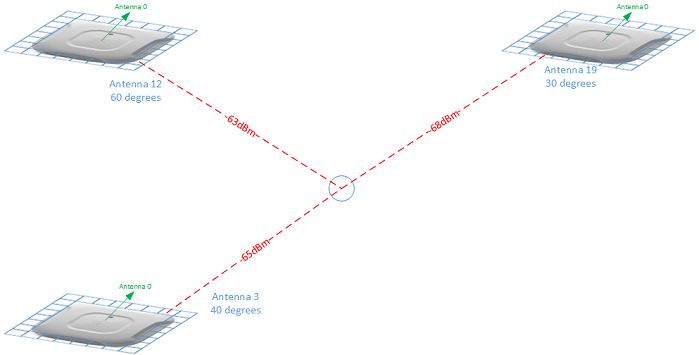
Halo to Usher in a New Era of Location Services for Healthcare
Enabling an infrastructure with serious location capabilities isn't cheap at roughly $1000 per access point (MSRP), so the use cases need to be substantial. HALO is a premium engagement and location offering that will not be adopted by the masses, however those who can leverage it effectively stand to offer tremendous value to their customers, patients, stakeholders, etc. Hospital environments to be the single most valuable environment for HALO, especially after RTLS tags are added to the mix. This environment is highly mobile and ripe for disruptive location technologies that can automate work flow and enable meaningful interactions and engagement. Hospitals today leverage multiple location systems that facilitate portions of work flow, however very infrequently are they integrated together well enough to gain additional actionable insights. There are a number of point products addressing nurse rounding, locating wheelchairs and beds, theft prevention (babies and assets), etc. Some of the "bleeding edge" use cases include playing a loved one's voice over IP speakers to coax an elderly patient back into bed or having a display cheer up a child who is battling cancer when they near the screen. In theory, this HALO module is enabling a world in which we know where every associated wireless device is down to a matter of feet, without necessitating RTLS tags. This opens the data floodgates for actionable intelligence at unprecedented levels.
Work Flow Optimization
RTLS vendors have been selling their solutions for years to address these issues and while there are clear ROIs in most cases, it still doesn't get adopted due to significant cost and/or limitations for a single purpose system. HALO offers the ability to gain insight into numerous inefficiencies within a hospital and can improve any investment already made in tags and RTLS systems. More importantly a truly location-enabled work flow could facilitate meaningful interruption ensuring that nurses are only getting notifications when absolutely necessary and routing other requests to someone who is better positioned to assist a patient quickly. These use cases have been well defined over the years and HALO is an enabler to making these a reality.
Throughput Analytics
Integrated with Prime and the MSE, HALO can provide improved throughput analytics for the waiting rooms. I'd expect this to get down to individual care arcs in which an organization could track a single patient progressing through their visit and providing trends. This would provide feedback into the work flow optimization process and enable further analysis of the changes made to the work flow processes.
Patient Engagement
There has been a lot of buzz around "mobile engagement" lately and as a professional in this field I can attest that there certainly are many options and the jury is out as to which is the best one at this point. I am a huge proponent of the Low-Energy Bluetooth solutions out there, however HALO may be the first "Wi-Fi only" offering that offers the ability to truly engage with BLE-like location capabilities. Organizations evaluating these solutions need to account for the care and feeding of a BLE-based solution as like many of the RTLS offerings there is a battery powered infrastructure that has to be maintained.
Turning Low-Energy Bluetooth (BLE) Upside Down
One of the major limitations to the Low-Energy Bluetooth solutions is that they are almost exactly backwards from RTLS solutions in that mobile assets are required to interact with fixed (usually) assets. This typically means an app on a Smartphone (carried by a mobile user) is the typical mode of engagement and this is an active process. A few use cases of cropped up recently in which a BLE-beacon is strapped to a patient to monitor them as they move through an environment. To accomplish this the interaction points along the way require a tablet mounted to the wall to pick up on the patient's tag and initiate the engagement work flow. This reverse BLE-solution is somewhat innovative and solves a specific problem, however we need a world in which mobile assets are interacting with other assets on demand and relative proximity to each other should be irrelevant as long as I have access to the back end data. I believe that HALO is positioned to do exactly this as it evolves and in doing so will allow the use of Wi-Fi based geofencing capabilities indoor, reducing or possibly even eliminating the need for traditional fixed beacons. At the very least this will provide us new deployment options and can be combined with a BLE infrastructure to offer infinite interaction capabilities.
Internet of Things
The items above all point towards enabling the Internet of Things (IoT) and allowing real time interactions between devices to the betterment of the healthcare environment. An example of this could be the lifecycle of an infusion pump. These devices follow a predictable cycle in which they move from being clean through being attached to a patient and ultimately wind up having to be cleaned again before being released back to the care areas. In this scenario, alarms could be triggered by a device that has not been put in a maintenance mode and is following an unexpected path, possibly avoiding a dirty pump being brought to a patient, etc.
Using HALO
Effectively using HALO requires that the APs are mounted to the ceiling grid as they need clear line of sight. Density is expected to be at least one AP every 50' with each covering roughly 2500 square feet. Environments using smartphones, etc. will typically see smaller square footages per AP due to the requirements of those smartphones, so the density of these modules will be higher.
Installations are expected to take longer due to specific needs around mounting locations. X,Y,Z coordinates need to be exact as well as the HALO module rotational orientation and alignment with antenna 0 of the 32 element array. These positions must be set in Prime 3.0 to provide proper location capabilities.
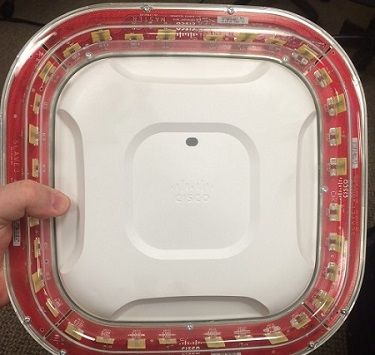
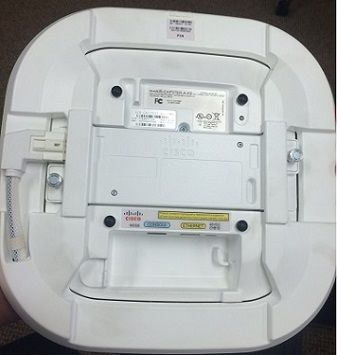
HALO Requirements
Cisco 3600/3700 AP (and future access points)
Cisco Wireless LAN Controller running 8.1 MR3 (8.1.123.x)
Cisco Prime 3.0
Cisco Mobility Services Engine
Cisco Connected Mobile Experience (CMX) 10.2.1

